Khiva was an important trading post, and was the first city in Uzbekistan to be listed as a World Heritage Site, in 1990. Although the city is often overlooked on Uzbekistan and Central Asia itineraries due to its distance from Tashkent, it is a unique cultural experience filled with stories and history. In my opinion, it’s one of the country’s most unique and interesting cities. I plan to write further travel guides and blog posts on Uzbekistan very soon, Including a Bukhara city guide.
Khiva is more than 2500 years old, but a lot of what you see now was built between the 16th century and 19th century. Legend has it that it was founded by Shem, one of the sons of the biblical Noah. Enclosed within high city walls, it’s effectively a huge open-air museum, filled with rich history, minarets and unique clay buildings.
From the moment you walk through one of its four gates into the walled city, it’s impossible not to be impressed by the breathtaking architectural monuments. One can only imagine what it would have looked like at its ancient Silk Road peak, packed with traders, merchants and those living their everyday lives.
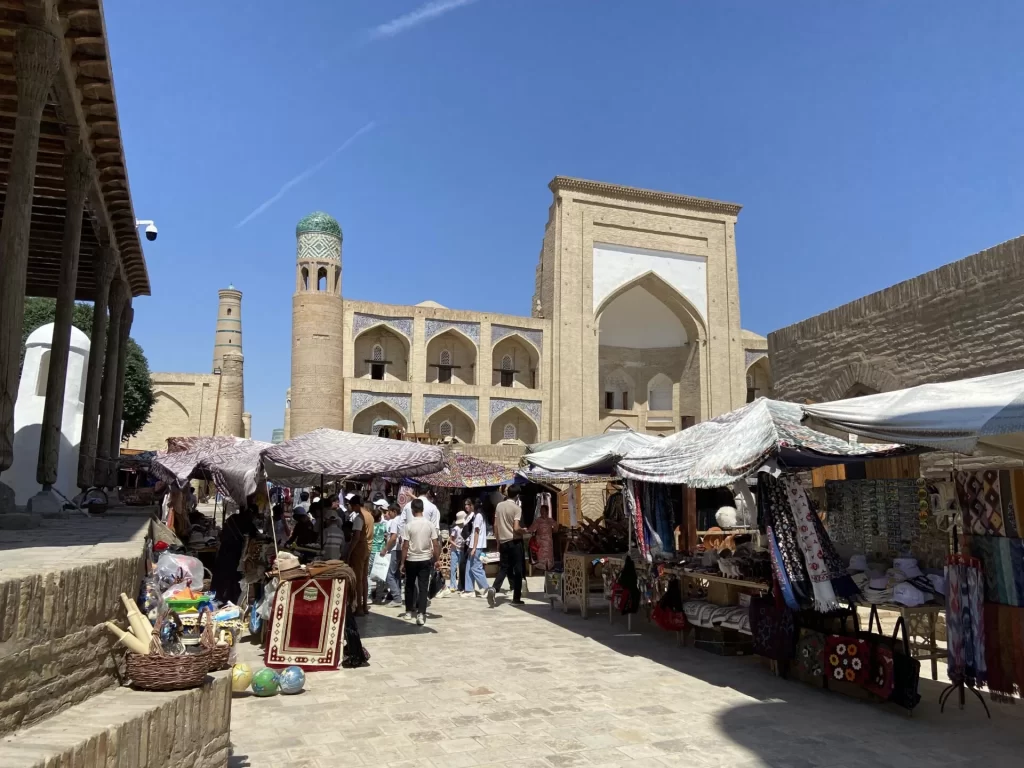
Important things to know about Khiva
- It is free to enter and explore Itchan Kala (or Old City Fortress) – primarily because some guesthouses are inside the walls. However, you will need to buy a entrance ticket costing 200k SOM (£12) at the ticket office from its entrance gates to visit all the historical sites, city walls, and museums. There is an additional cost of 100k SOM (£6) to walk to the top of the minaret. Tickets can be bought at the west gate from the cashier desk and are valid for two days. You can enter through the north gate, and I’ve read reports of guards just waving tourists through, although you should have a ticket.
- Opening times to the sites range depending on the season, open from 8 am – 8 pm in high season and 9 am – 6 pm in low season.
- Uzbekistan is a Muslim country and even though it is not as strict as other countries I have visited, you should dress modestly at all times.
- Depending on the time of year you travel, it can get extremely hot during the summer months. I found this was the best time to explore as it was much quieter compared to the morning and evening. However, if you do this, please make sure you drink plenty of water and apply sun cream.
How to reach Khiva
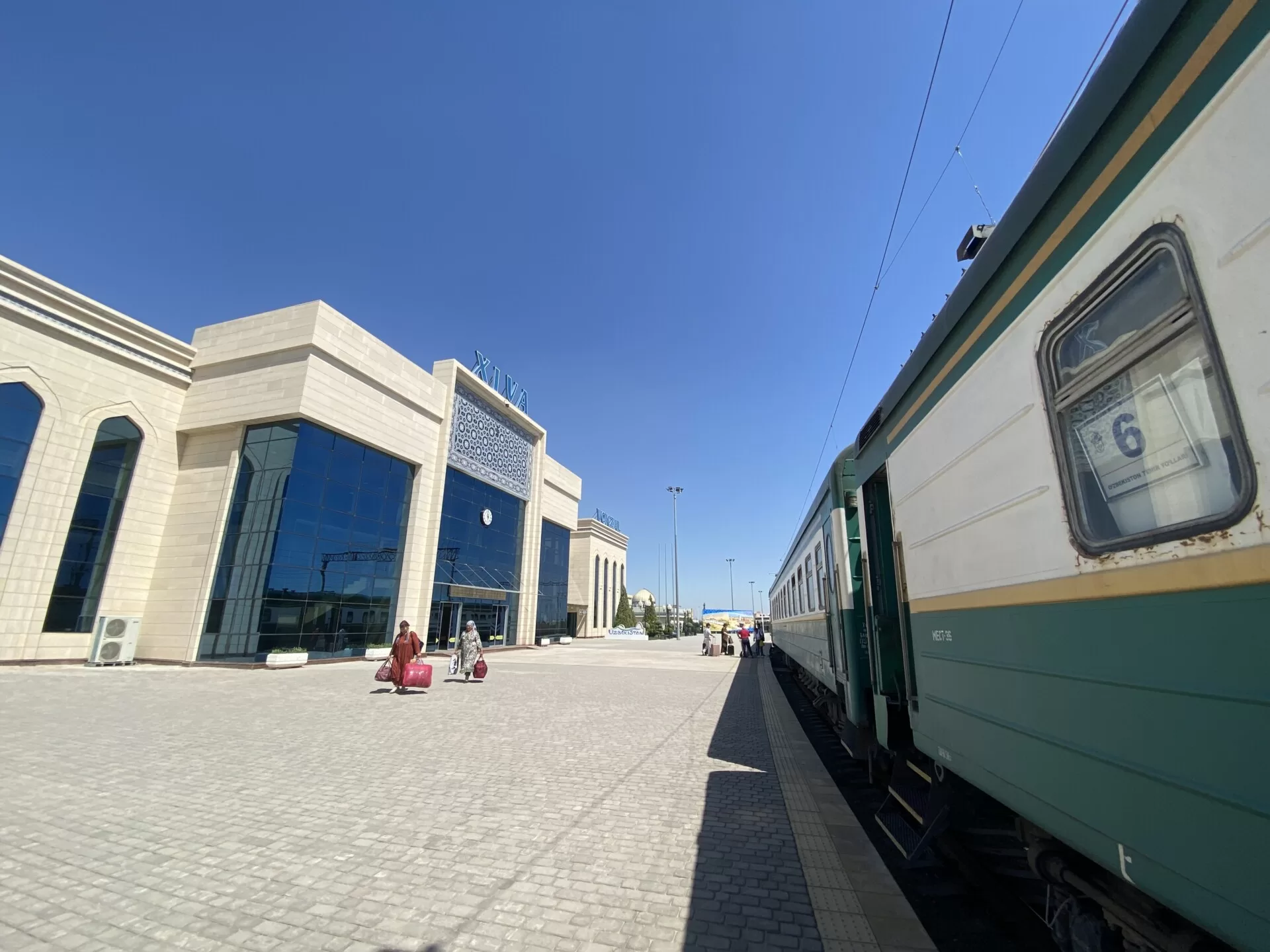
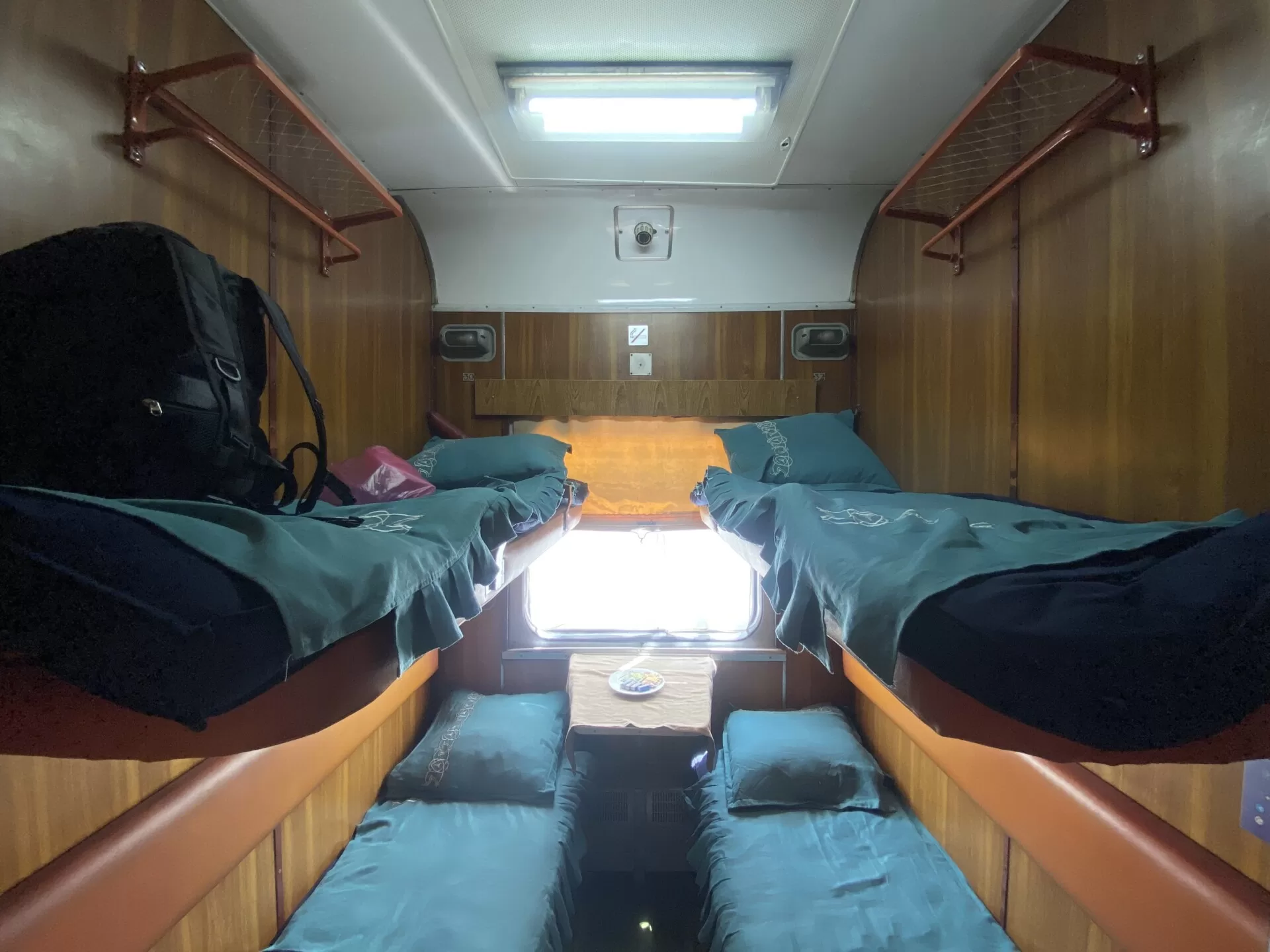
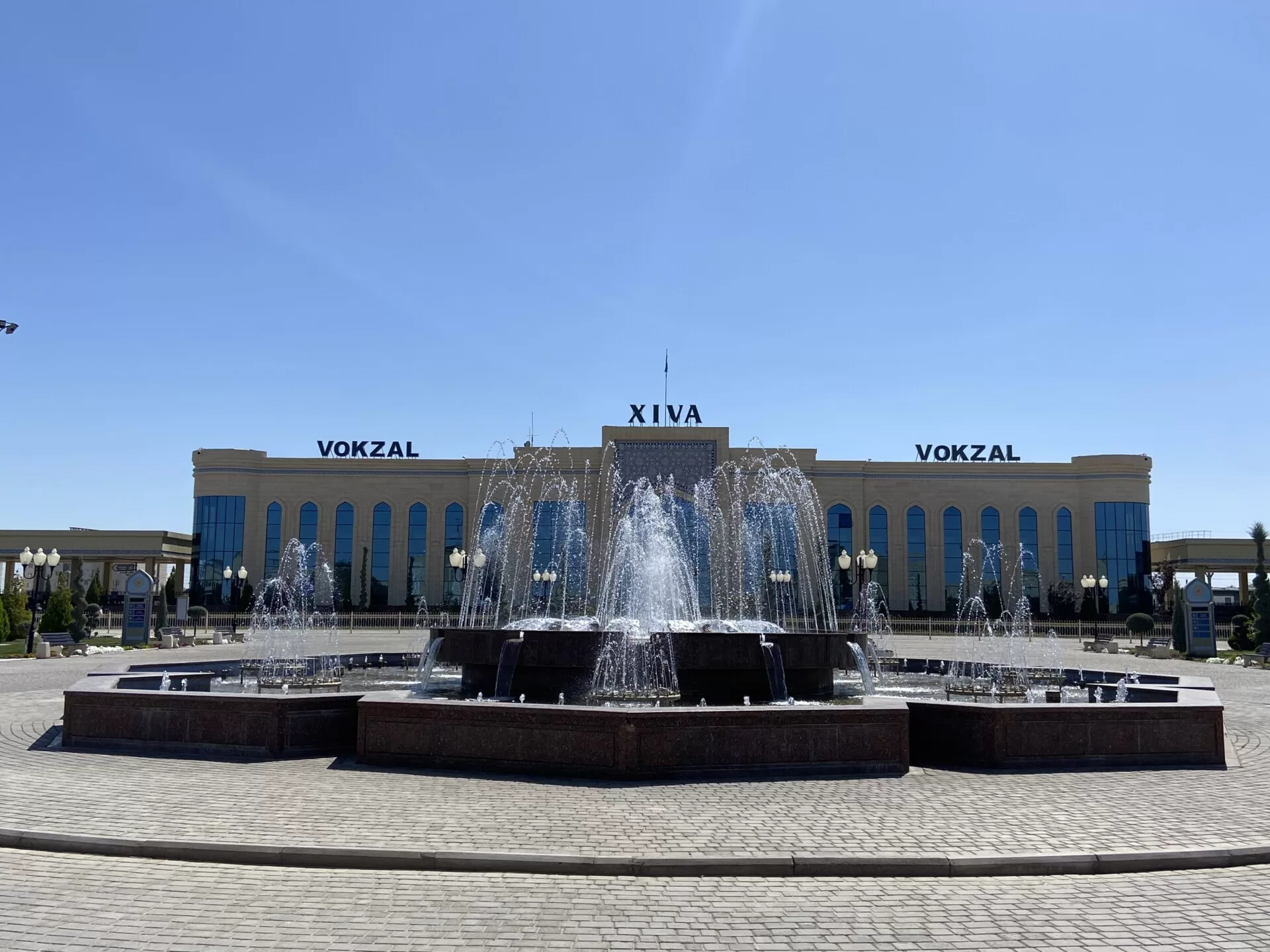
When it comes to reaching Khiva, you’ll have several transport options, some of which are direct, while others go via the city of Urgench – which also has the nearest international airport.
You can travel between Urgench and Khiva by private or shared taxi, trolleybus, or an infrequent train service. Each option should take less than an hour, and the cost varies. I personally recommend using the Yandex Go Taxi App, for booking private taxis in Uzbekistan.
- Flying – Urgench Airport is around 35 km from Khiva and is the closest airport. Uzbekistan Airways offers direct flights from most destinations in Uzbekistan, as well as a handful of major cities in Europe and Russia. Once at the airport, you would need to transfer to the city center by taxi, to take your ongoing transport to Khiva.
- Train – This was my chosen mode of transport and if you have the time, I would definitely recommend it. You can take the train from its capital city Tashkent, Samarkand & Bukhara directly into Khiva Train Station, and its only a short walk to the city centre. It’s worth bearing in mind that some trains will terminate at Urgench Railway Station.
I traveled from Tashkent on the 16-hour night train which departed at 18:15 pm and arrived in Khiva at 10:28am the next day. I booked a 4-berth sleeper costing 320,000 Som (around £20), which I thought was kept in excellent condition, and a very comfortable journey. Some trains have a 3rd class, if you wanted to purchase a cheaper ticket. Train tickets can easily be booked directly using Uzbekistan Railways website (O’zbekiston temir yo’llari | Home (railway.uz)). Important Tip: you can change the language to ‘English’ on the top right hand side and pay using credit or debit card. - Bus/Shared Taxi – This is the longest and least comfortable option, but it is the cheapest option. If you are on a really tight budget this would be the best option, but it’s not for the faint hearted; it’s around a 20-hour journey from Tashkent to Urgench Bus Station. On top of this you would then need to take onward transport to Khiva. There are buses or shared taxis readily available which connect Urgench to other major cities, such as Bukhara & Samarkand.
Getting around Khiva
Khiva is a very ‘walkable’ city, both within its city walls and beyond. There are usually taxis waiting outside the city walls if you are looking to get further afield and fancy resting your legs, but you should have no problem navigating your way around on foot. The main sights are found within the Ichon Qala.
Where to stay in Khiva
There is a surprisingly plentiful range of budget options in Khiva; there are cheaper guesthouses, stylish boutique hotels, and everything in between – essentially there is something to suit every budget. Personally, I’d suggest staying within its ancient city walls or at least close to the Ichon Qala, as this means you’ll be very close to all the major attractions. Plus, the train station is a handy 15-minute walk away.
Where I stayed in Khiva
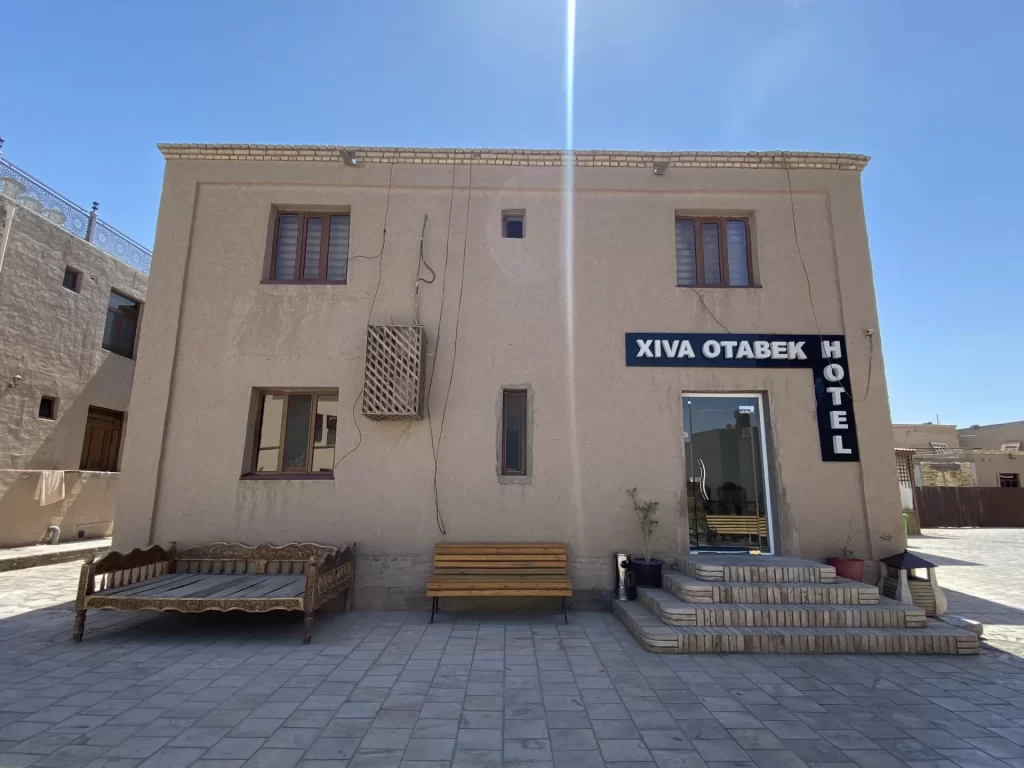
Name: Khiva Otabek B&B Hotel
Accommodation cost: £12.50 (Khiva Otabek B&B Hotel, Khiva (updated prices 2024) (booking.com))
Situated within the old town, this hotel was an ideal budget stay and was within easy walking distance of all the main sites and restaurants. I stayed in a budget double room, which had its own entrance hallway, and a private bathroom. The room was equipped with a TV, wardrobe and – thankfully – air conditioning. There was also a communal sitting area and shared kitchen. The check-in process was easy, and – also thankfully – the room was ready when I arrived.
Where to eat in Khiva
In Ichon Qala you’ll find a variety of popular restaurants and places to stop for drinks. Although it’s worth keeping in mind that most of them are quite touristic, and therefore more expensive. If you’re willing to dig a little deeper, you can find traditional dishes and drinks at very affordable prices. Popular places are Khiva Moon and Terrassa Cafe & Restaurant, also don’t forget to try shivit oshi, which is Uzbekistan’s green noodle signature dish.
My first meal in Khiva was in a restaurant in what is considered the ‘central area’ of the old town, near the Kalta Minor Minaret. It was a completely outdoor setting in a small square, where you could see the smoke from the grills, and smell the kebabs as they sizzled away. I ordered a cappuccino and lamb kebab, which cost a reasonable 75000 Som (£4.50).
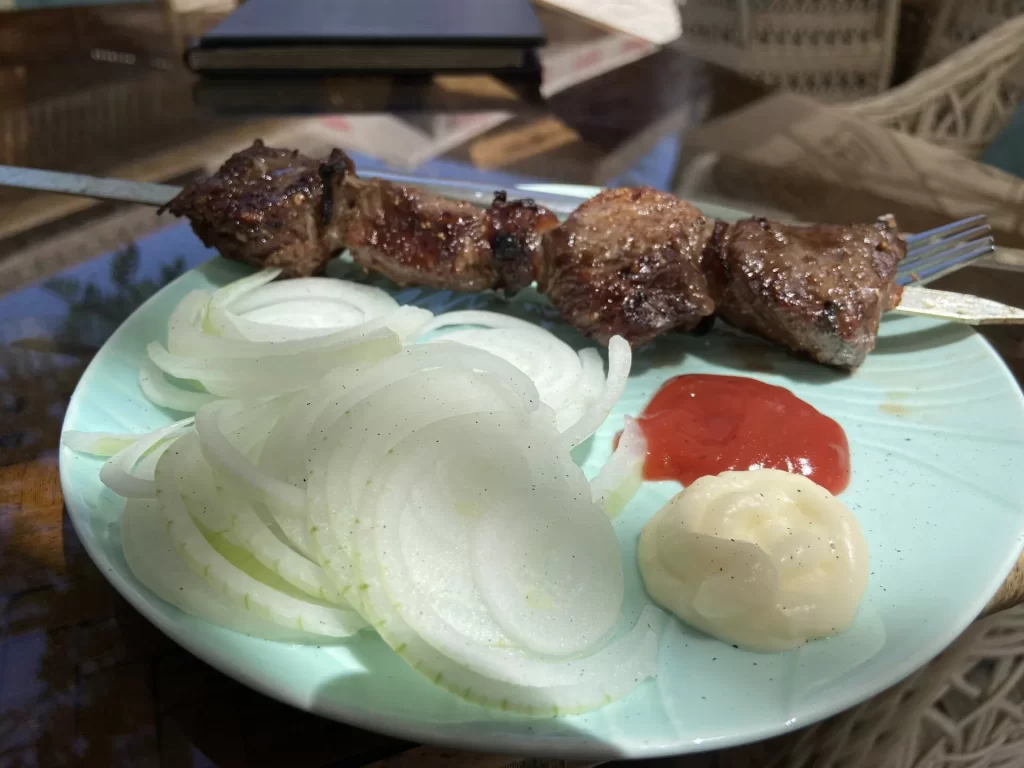
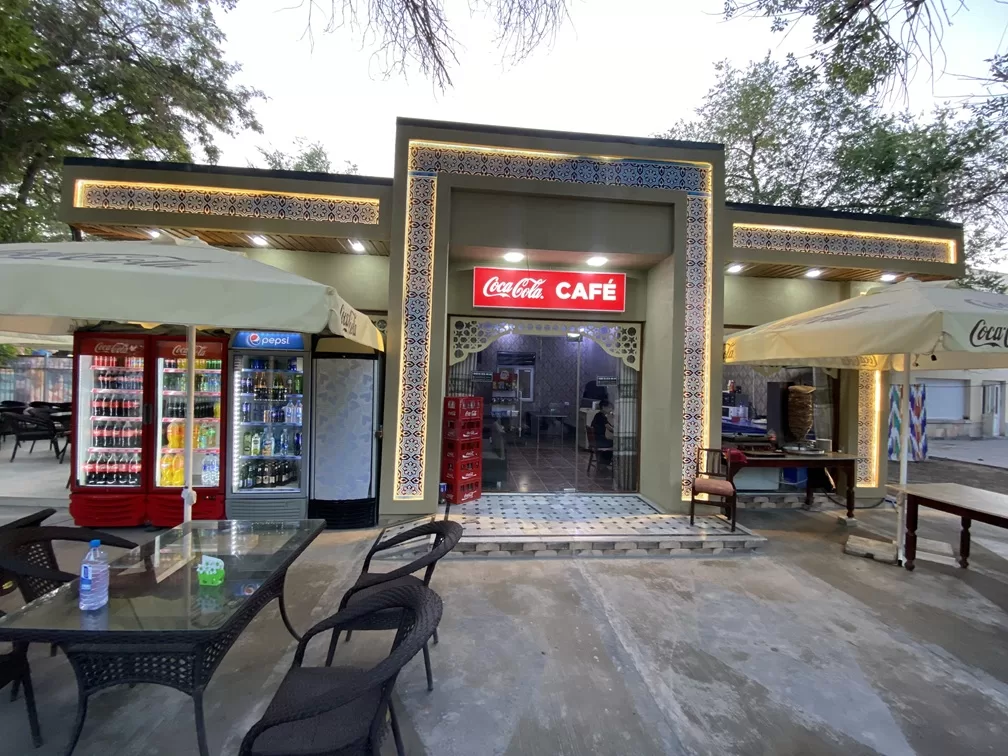
Although it was a basic meal of lamb kebab, bread and salad, it certainly didn’t disappoint, like most meals I’ve had similar to this. The meat was succulent, flavoursome, and the meal itself was excellent value for money.
For dinner, I went outside of the Old City to a restaurant called ATA Gamburg with two other travellers, one of whom I met on the train from Tashkent. We’d decided to explore the outer areas of Khiva, in what is a much newer part of the city.
It was far from an extensive menu, and had several pictures, which helped us decide what we wanted. We each ordered a meat filled samosa and an ‘ordinary’ which was meat in a kind of Uzbek flatbread topped with a spicy sauce. My share of dinner was 80000 Som (£4.75), this included a coffee and water.
The food was delicious. The combination of the pastry, meat and an interminable symphony of spices in the sauce was so good in fact, that we ended up ordering a second helping.
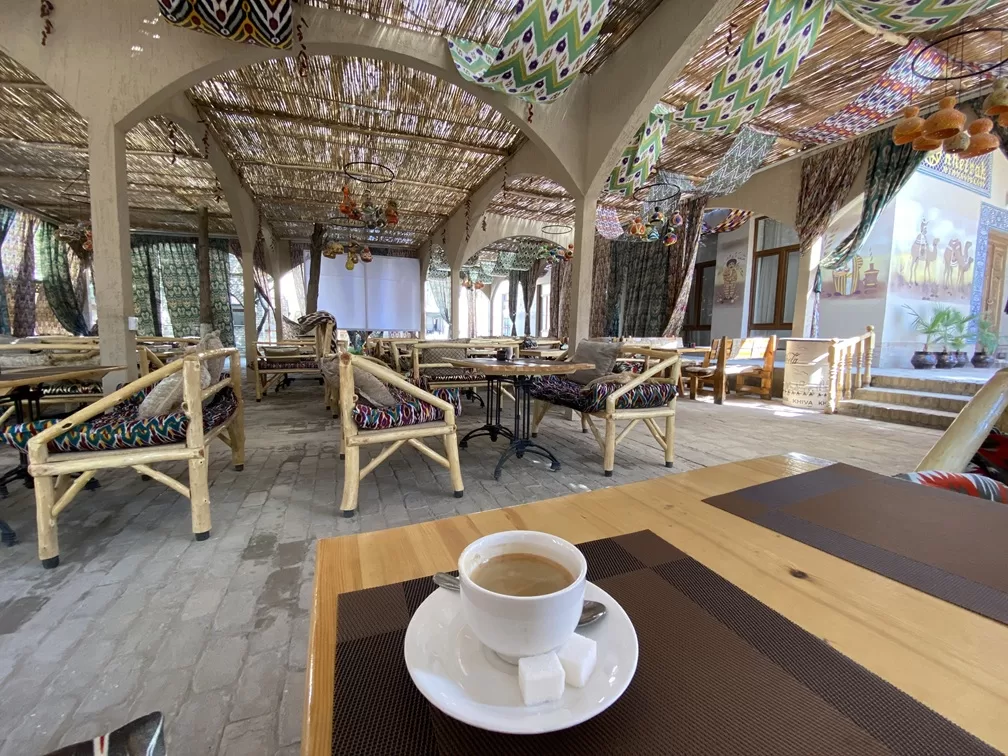
Top 5 things to do in Khiva
Explore Ichon Qala (or Old City Fortress)
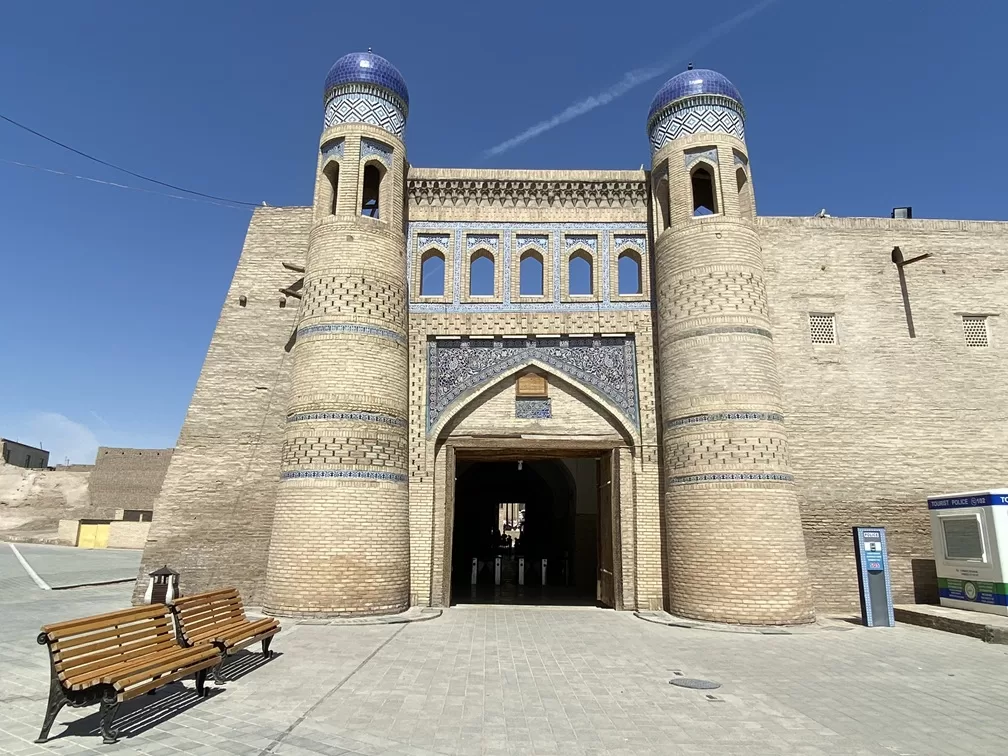
Khiva, is effectively an ‘open-air museum’ and you can find all of its main attractions with the Old City fortress. Entrance fees to visit these attractions are available from the West Gate, for 200k SOM (£12). The ticket is valid for 2 days.
Once you have bought your ticket you will be given a printed map with each of the main sites numbered. There is also a tiled map, that you can take a photo of, which is near the entrance of the west gate.
The first site is located a short walk from the West Gate. In my opinion this is the best way to explore and to see as much as you can if you are only visiting for a short time. That being said, I highly recommend going off-piste and getting lost in the side streets, if you have time. If you want to walk the city walls it is better to enter through the northern gates.
Islam Khoja Minaret
Dominating the Ichan Kala skyline at 56 meters tall, the Islam Khodja minaret is part of the Islam Khodja Madrasah and dominates the city of Khiva, and it was the first site in Uzbekistan to be included in the UNESCO World Heritage List, and is an architectural masterpiece.
The minarets impressive height dwarfs the madrasah next to it. In 1908 when it was built, it was designed to be the tallest minaret in all of Uzbekistan. As the sunsets its blue tiles become covered in a beautiful reddish glow.
Just standing at the base and looking up at it is awe-inspiring, but you can also take the 175 steps to the top to take in panoramic views far and wide over the Old City.
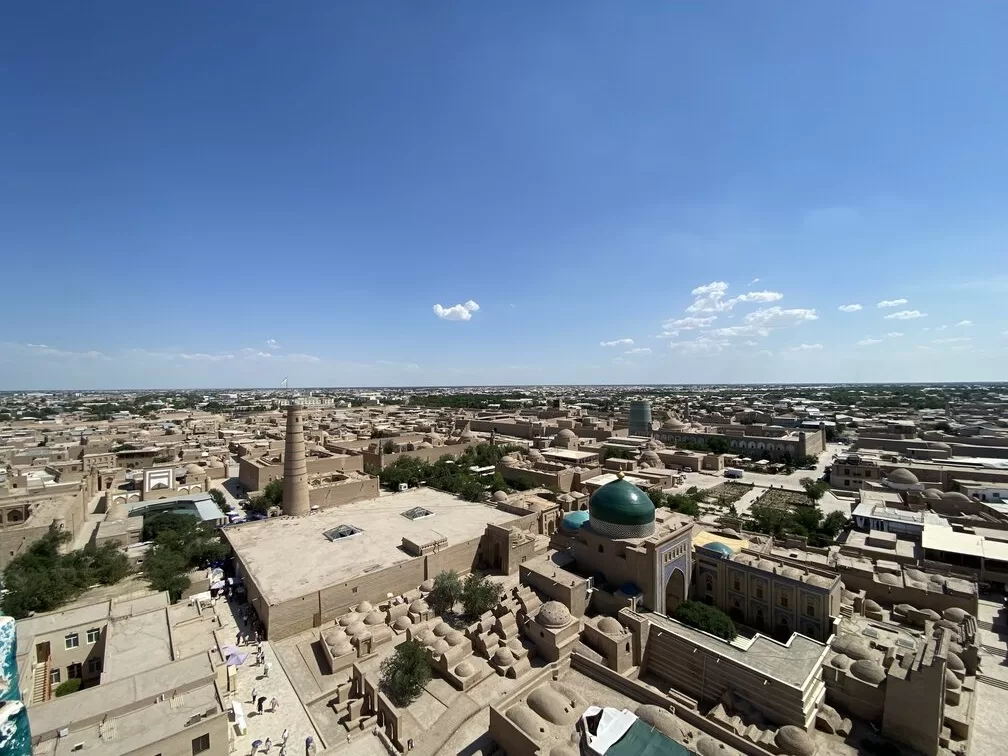
Note: This is not included in the main ticket, and it costs an extra 100k SOM (£6). It’s well worth the extra expense as the vista from the top is breathtaking.
Kuhna Ark
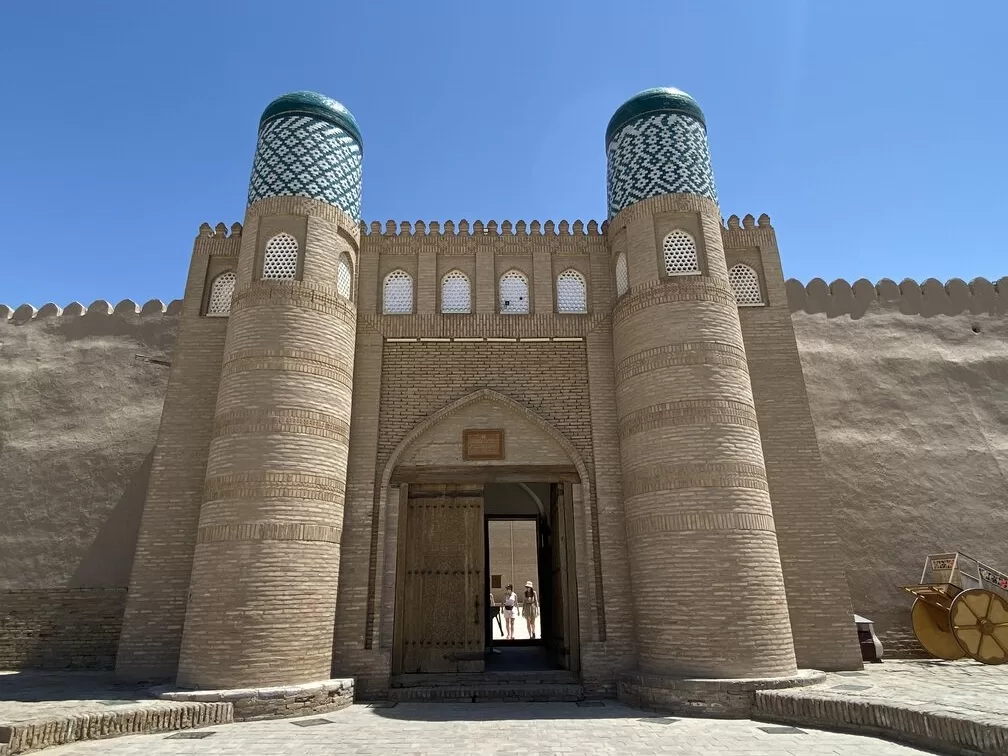
Built in the 12th Century, the Kunya-Ark Citadel was the Khiva ruler’s own fortress as well as their personal residence. Within the fortress you can explore other areas such as the harem, old mint, stables, arsenal, barracks, mosque and jail. This all offers a wonderfully haunting and authentic insight into how the rulers would have lived back when Khiva was a bustling city.
The tiling, colours and architecture were stunning, especially in the Summer Mosque. Straight ahead of the Ark entrance is the restored open-air throne room, where the Khan himself would cast judgement and throughout the Ark there are displays of chains, weapons, and currency, as well as Khorezmian archaeology. This really is a ‘city within a city’.
Kalta Minor Minaret
As soon as you walk through the West Gate the Kalta Minor Minaret, and the large turquoise-tiled tower come into view. The unfinished minaret itself is incomplete because only the base was ever built. Shortly after its construction began in 1851, the khan who had ordered it died (in 1855) and as a result, it was never finished.
Despite being incomplete, this beautiful minaret serves as a stunning visual reminder of what could have been.
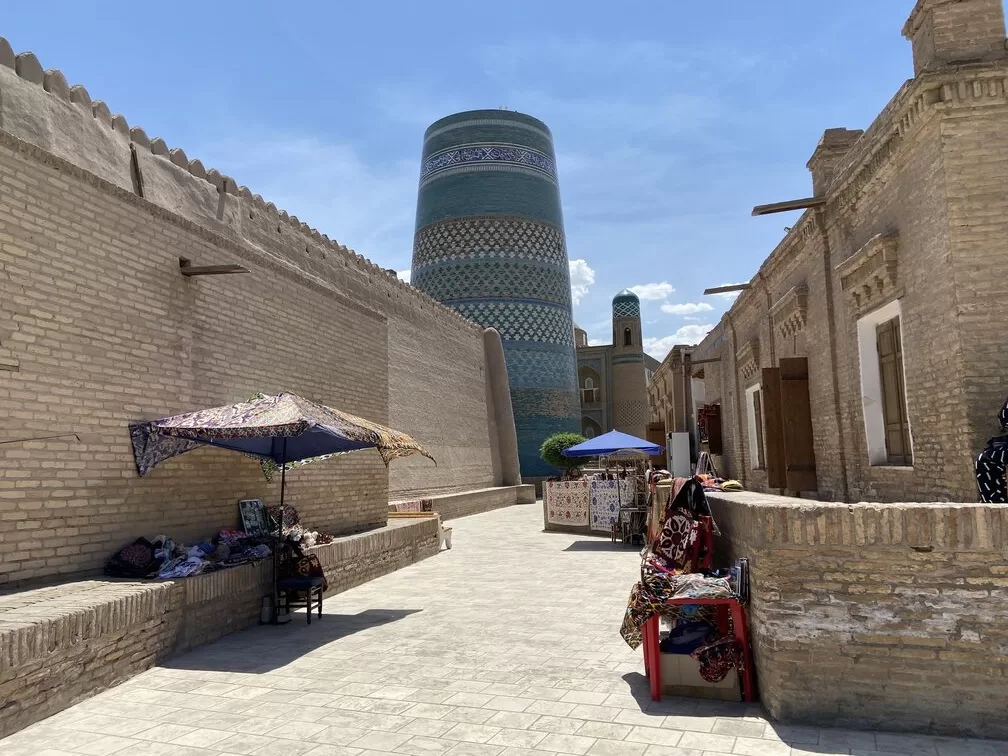
Juma Mosque (Friday Mosque)
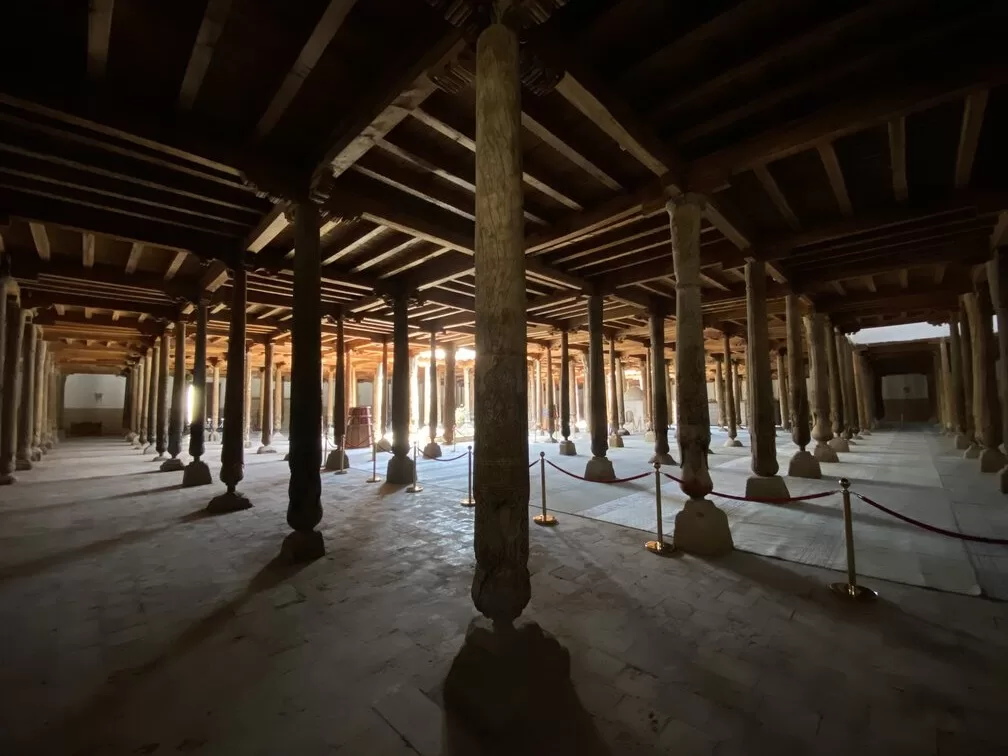
When I travel, visiting mosques is one of my favourite things to do.
They are all exquisitely built, and there is something I find hauntingly beautiful about the five-times-daily call to prayer. Dating back to the 10th century, Juma Mosque stood out in comparison to any I had previously visited, because inside there are no less than 218 intricately-carved wooden columns supporting the roof. It was a magnificent and refreshingly cool place to wander around during the day, to escape the midday sun.
A city not to be overlooked
When I researched my travel itinerary, I’d read time and time again that Khiva is often overlooked during visits to Uzbekistan. Even after spending a short time here – for the life of me – I cannot understand why.
From the very second I stepped off the night train into the blistering heat and stepped inside the Old City, I felt like I’d stepped back in time. The market stalls, the musical chatter of the sellers, and the alluring smell of grilling meat were all set against the backdrop of truly historical monuments. I felt like a long travelled merchant discovering a new land for the first time, it was an unforgettable experience!
